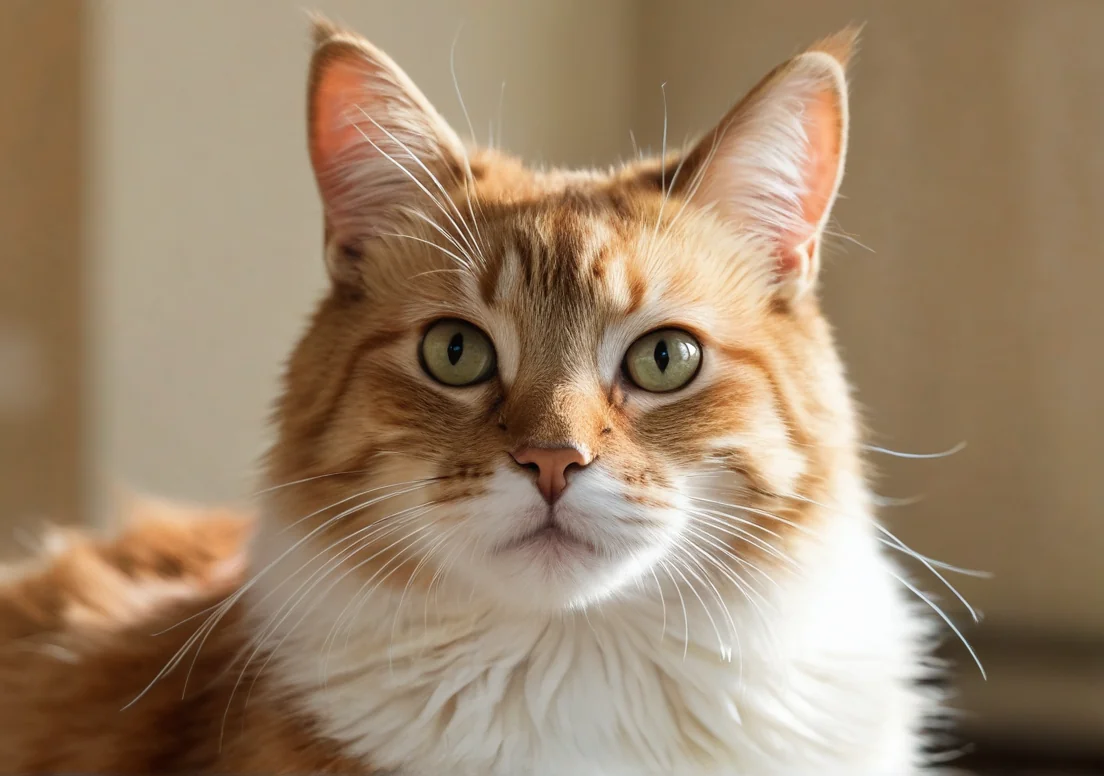Have you ever been perplexed by your cat’s high-pitched squeaks? You’re not alone! This curious vocalization can leave many cat owners scratching their heads.
Cats squeak for various reasons, often expressing their needs, excitement, or even discomfort. While it may sound adorable, it can also communicate a range of emotions or needs your feline might have. There’s a surprising depth to these cute vocalizations, and you’ll want to uncover what your cat is really saying.

Common Reasons for Cat Squeaks
Cats have a way of making their feelings known, often through surprising squeaky sounds. You might wonder what these sounds really mean. Let’s break down some of the most common reasons your cat might be squeaking.
1. Attention Seeking: If your cat’s seeking some affection or interaction, a squeaky meow could be their way of saying, “Hey, look at me!” Fine-tuning your response to their vocalizations can help strengthen your bond.
2. Hunger: One of the most classic reasons for a cat’s squeaky call is hunger. If their food bowl is empty or it’s closer to mealtime, expect some vocal reminders.
3. Playfulness: Sometimes, a squeak might signify that your feline friend is in a playful mood. If you see them crouching or their tail twitching, they might be trying to engage you in playtime.
4. Discomfort or Pain: A sudden vocal change can indicate discomfort. If the squeaking seems out of the ordinary, it could be worth a vet’s visit to rule out any issues.
5. Anxiety or Stress: Changes in the household or environment can lead to stress, often manifesting as unusual vocalizations. If your cat’s squeaking coincides with changes in routine or new household members, they may need some extra reassurance.
Sometimes, understanding the nuances behind the squeak can help you respond appropriately, ensuring your kitty feels secure and understood.
Is My Cat Trying to Tell Me Something?
Cats communicate in a unique language, and their vocalizations—especially squeaks—can hold more meaning than you might think. Just as humans express themselves through tone and volume, your cat’s squeaks come with their own set of cues.
If your cat’s squeaking seems particularly high-pitched or frantic, it might indicate a need for immediate attention or even distress. On the other hand, a softer squeak might simply mean they’re feeling playful or are trying to get your attention without demanding it.
Pay attention to the context of these sounds. Is your cat near their food bowl? That squeak likely means it’s mealtime. Are they approaching a door? They may want to explore or go outside.
Additionally, consider body language. If they’re kneading or purring while squeaking, they’re likely feeling happy and relaxed. If their ears are pinned back or their tail is twitching, they could be anxious or upset.
Learning to interpret these signals can enhance your relationship with your cat. Emotional intelligence is just as important for our feline companions as it is for us—knowing what the squeak means helps ensure they feel loved, secure, and understood.
How Do Age and Breed Affect Vocalization?
Certain breeds are known for their vocal personalities. For instance, Siamese and Burmese cats often chatter away, using their voices as a way to engage with their humans. In contrast, British Shorthairs tend to be more reserved and may not vocalize as much.
Age also plays a critical role. Kittens are naturally more playful and curious, resulting in higher vocalization as they explore their surroundings. As cats age, their vocal patterns can change; some might become more vocal if they’re feeling anxious or if they have health issues, while others may quiet down due to reduced energy levels or sensory decline. Keep an ear out for shifts in volume and frequency—it’s a good indicator of how they’re feeling.
What Does It Mean When My Cat Squeaks When Playing?
Squeaking during playtime isn’t just adorable; it often reveals what’s going on in your cat’s mind. Cats can express a mix of excitement, hunting instinct, and even frustration through their vocalizations. If they’re squeaking while pouncing or stalking their toy, it usually means they’re fully engaged and enjoying themselves.
In some cases, a squeak might signal an overwhelmed or curious cat. Pay attention to the context: if playtime turns into a squeaky battle with a sibling, it can indicate rivalry or excitement. Also, consider the type of play. Interactive play typically generates more vocalization, while solo play might lead to quieter moments.
Being aware of what your cat’s squeaks mean can help you adjust play sessions to better suit their mood or energy levels. If you notice persistent squeaking combined with signs of distress, it’s worth chatting with your vet.
Are Stress or Pain Factors Behind the Squeak?
A cat’s squeak can signal more than just a quirky vocalization. Stress and discomfort often manifest in surprising ways, and the squeak might be your furry friend’s way of expressing unease or pain.
Watch for signs that could indicate something’s off—like changes in appetite, grooming habits, or litter box usage. For instance, if your cat’s usually playful but suddenly seems withdrawn, that squeak could be tied to anxiety or a health issue.
Pain can also cause that little vocalization. If your cat’s squeaking is accompanied by limping, hiding, or abnormal postures, it’s time to consult a vet. Keeping tabs on your cat’s squeaks in conjunction with other behavioral changes can help you spot potential issues early on.
Importance of Body Language in Cats
Interpreting a cat’s body language is essential in understanding their squeaks. Cats communicate a lot through posture, tail position, and even their ears.
For example, if your cat’s tail is held high and they’re squeaking, they might just be excited or wanting attention. On the flip side, if their ears are back and the body is tense, that could spell discomfort or stress.
Here are some key body language cues to look for alongside squeaking:
– Purring: Indicates contentment, but can coincide with squeaking if they’re seeking attention.
– Dilated Pupils: Usually a sign of excitement or fear.
– Flattened Ears: Indicates irritation or discomfort.
– Crouching Body: Usually a defensive posture, suggesting fear or stress.
Paying attention to these signals will give you deeper insight into what your cat is trying to convey. Each squeak can tell a unique story when combined with body language!
Fun Facts About Cat Vocalizations
Cats don’t just meow to communicate with their fellow felines; they actually use it primarily for us humans. It’s a fascinating twist on interspecies communication. Unlike dogs, who have a repertoire of barking sounds, cats are quite versatile. They can produce over 100 different vocalizations, including screeches, purrs, and of course, those adorable squeaks.
Squeaking can be a sign of playfulness or even frustration, depending on the context. If your cat is trying to catch a toy or is annoyed with you for not opening the door, that little squeak can tell you a lot. Cats have adapted their vocalizations over time, honing their sound to elicit our attention or to express their needs.
Interestingly, kittens often squeak to get their mother’s attention, and as they grow, their vocalizations change. Female cats, particularly when in heat, might use a higher pitch, while males may adopt a more gruff tone. This vocal evolution illustrates how deeply cats have intertwined their communication with us and their social structures.
Can Training Impact My Cat’s Squeaks?
Training your cat can indeed influence their vocal behavior. Cats are intelligent creatures, capable of learning through positive reinforcement. If you reward a cat for keeping quiet when they might want to squeak, you may notice a decrease in squeaks over time in certain situations.
Conversely, if you respond positively when they squeak—like offering treats or attention—they may squeak even more to get what they want. This can lead to an increase in vocalizations, as your cat figures out that they can effectively communicate their needs that way.
Engaging in regular play and socialization can also help manage their vocalizations. A well-stimulated cat might be less likely to squeak out of boredom. Try incorporating a variety of toys and interactive play sessions to keep your cat engaged. Additionally, spend quality time together; companionship can reduce anxiety-based squeaking.
Training tips to consider :
– Reward quiet moments consistently.
– Use clicker training to reinforce desired behaviors.
– Spend time socializing to help build confidence.
By understanding how your responses shape your cat’s communication, you can pave the way for a quieter, more harmonious household.
Exploring Cat Squeaks in Different Contexts
Cats can be quite the vocal creatures, and their squeaks often carry a mix of meanings depending on the situation. Understanding the context can provide real insight into what your feline friend is trying to communicate.
One common scenario for squeaking is during playtime. When your cat gets excited, especially while chasing a toy or during a playful confrontation with another cat, you might hear those little squeaks surfacing. This can indicate joy, eagerness, or even a playful challenge. If your cat’s squeaks coincide with pouncing and running, it’s likely a fun expression.
Mealtime also tends to be a prime opportunity for squeaking. If your cat’s squeaking intensifies right before or during feeding time, they’re likely expressing hunger or impatience. Cats can be quite expressive when it comes to their food schedule!
In moments of discomfort or distress, a cat’s squeak might take on a different tone. If your cat seems more anxious or agitated, their squeaking might indicate that they’re feeling threatened or unwell. Pay attention to body language—if their tail is twitching or they’re flattening their ears, it’s a good signal to check in.
Another interesting context is greetings or affection. If you just walked in after a long day, a soft squeak could be your cat’s way of saying “hello” or expressing excitement to see you. Their vocalizations often mimic their unique personalities, so some cats are just more chatty than others.
Let’s not forget territorial behavior. If your cat sees another animal outside, their squeaks may serve as a warning or an invitation for a face-off. This is especially common among outdoor cats, where asserting territory becomes key.
Being mindful of the environment can also help. A sudden squeak during a loud event, like a vacuum cleaner or fireworks, can indicate stress. If your furry friend seems skittish, some additional comfort and a quiet space would likely help.
Understanding why your cat squeaks means tuning into the little nuances of their behavior in these varied contexts. Assess the situation, observe their body language, and you’ll become more in tune with their needs.
Alex, a passionate animal lover, has experience in training and understanding animal behavior. As a proud pet parent to two dogs and three cats, he founded AnimalReport.net to share insights from animal experts and expand his knowledge of the animal kingdom.




